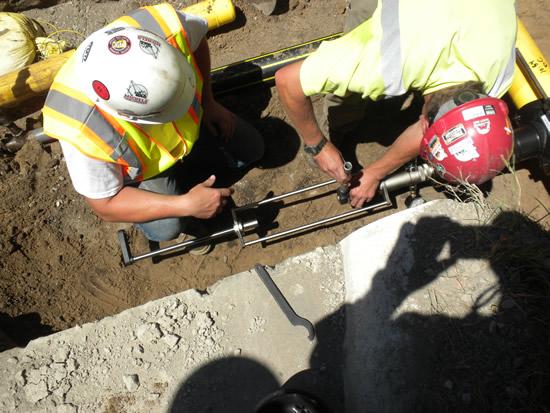
EEI offers the full-range of engineering services, from the wellhead to the burner-tip, for upstream, midstream, and downstream segments of the natural gas industry. EEI’s gas engineering and design staff includes licensed Professional Engineers and Subject Matter Experts with decades of experience in the engineering, design, operation and maintenance of major gathering, transmission, and distribution pipeline systems.
Our engineering practices, design methods and standards, and equipment selection processes incorporate our experience with the client’s systems to achieve high reliability and minimal execution risk without compromising other objectives.
Our designers and drafters are skilled in many engineering and design software tools including:
- Autodesk AutoCAD (Versions 2012 and 2015)
- Bentley MicroStation (Version V8i)
- Microsoft Project (Scheduling)
- HYSYS (Process Simulation)
- SynerGEE (Pipeline Hydraulics)
- PHAWorks (HAZOP and PHA Facilitation & Tracking)
Technical Competency and Commitment
Several of EEI’s senior staff persons are members or contributing members of national technical committees, including the Gas Piping Technology Committee (GPTC), ASME B-31.8, and the Gas Pipeline Safety Research Committee (GPSRC). EEI also participates in organizations such as the American Gas Association (AGA) and the International Gas Union (IGU), ensuring us a voice in the natural gas industry.
Upstream Segment
(Wellpad and Production Systems)
EEI’s engineers and designers have experience in the design of all upstream facilities that typically make up a well pad. These facilities include, but are not limited to:
- Flowlines, Slug Catchers, and Sand and Sediment Filters
- Gas Production Units, Glycol-type Dehydration, and Gas and Liquid Measurement
- Water and Condensate Storage Tanks, and Vapor Recovery Units and Systems
Examples of past projects in the upstream segment include:
- Design of improvements in piping and control of existing gas well pads
- Preparation of as-built drawings (PFD, P&IDs, general arrangement plans, electrical one-line diagrams, electrical area classification)
- Debottlenecking of piping and equipment on gas well pad when new production capacity exceeded expectations and equipment capability

Midstream Segment
(Transmission & Gathering Systems)
EEI’s engineers and designers have experience in the design of all midstream facilities, typically beginning with the regulated or unregulated gathering system and ending at the transmission system point of delivery to the local distribution system. These facilities include:
- Gathering systems, compression, gas conditioning, gas processing, and measurement
- Transmission measurement, regulation, pipeline, and compression
- Storage field pipeline, compression, and measurement
- Transmission pipeline systems
Pipeline Engineering & Design
EEI also provides engineering consulting services for the maintenance and operation of all types of natural gas facilities.
EEI’s staff is experienced in all phases of the pipeline life cycle, including:
- Conceptual project development, feasibility assessments, and development of the basic engineering package
- Sizing and system expansion
- Specification and selection of materials and equipment
- Basis of design development
- Assist with regulatory and other permitting processes
- Execute detailed engineering & design, produce issued for bid (IFB) and issued for construction (IFC) drawing sets
- Provide support during construction
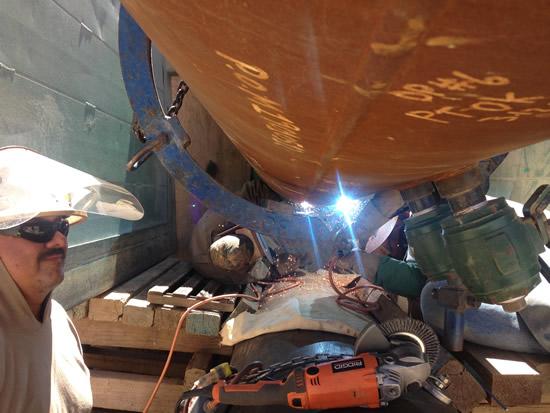
EEI completes project engineering and design using the client’s design and drafting specifications and standards, EEI’s design and drafting standards and specifications, or a combination of both. EEI works with all of the industry required and accepted regulations, codes, standards, and specifications specific to pipeline facilities.
Examples of past pipeline projects in the midstream segment include, but are not limited to:
- Engineering, design, drafting, material and equipment specification, permit acquisition, construction bidding, construction oversight, and commissioning of 5 miles of 8” Gathering pipeline, metering facilities, and interstate pipeline interconnect
- Assisted with securing NCUC approval to install new pipeline facilities; then provided engineering, design, permitting support, and construction oversight for the installation of 600 miles of 4” through 12” transmission pipeline in North Carolina
- Engineering, design, drafting, material and equipment specification, construction specification, and permitting support to replace or modify sections of an existing 36” pipeline to facilitate smart pigging. Work included jack and bore for a railroad crossing, removal of casing and new interconnect, and abandonment of existing pipeline
Station Facilities Engineering
Using the same principles and processes described for Pipeline Facilities, EEI engineers and designers have developed designs for portions of facilities, or complete facilities, for all of the following:
- Compressor, metering, regulator, and separation and dehydration stations
- Compressed Natural Gas (CNG) facilities
- Natural Gas Liquids (NGLs) facilities
In addition to the applicable regulations, codes, standards, and specifications described for pipeline facilities, EEI works with all of the industry required and accepted regulations, codes, standards, and specifications specific to station facilities and pipeline assets.
Examples of past station projects in the Midstream Segment include:
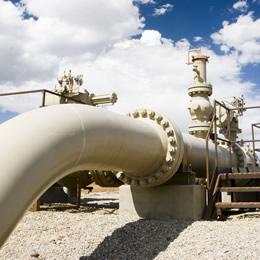
- Engineering, design, material and equipment specification, and cost estimates to rebuild 239 high pressure regulator sets (HPRs), 28 district regulator station re-designs, 6 regulation stations re-designs, and abandonment of 366 HPRs
- Engineering, design, drafting, material and equipment specification, construction specification, construction bidding, and permitting and construction support for the installation of two FERC regulated compressor stations totaling 45,000 BHP
- Owner’s Engineer for the engineering, design, construction, and commissioning of a 60 MMSCFD NGL plant including 70 MMSCFD inlet separation and dehydration, screw-type refrigeration compression, control system for unattended operation, 250 psig mixed liquid storage tanks, and truck loading and unloading station
Instrumentation, SCADA, & Controls Engineering
EEI has a team of experienced engineers and designers that provide engineering designs, troubleshooting and expertise. Our experts are thoroughly familiar with Advanced Process Control (APC), Distributed Control Systems (DCS), Programmable Logic Controllers (PLC), working with graphic displays and Supervisory Control and Data Acquisition (SCADA) systems.
Our engineers combine years of field applications work, along with the design experience thereby making this specialized field of work one of EEI’s strengths.
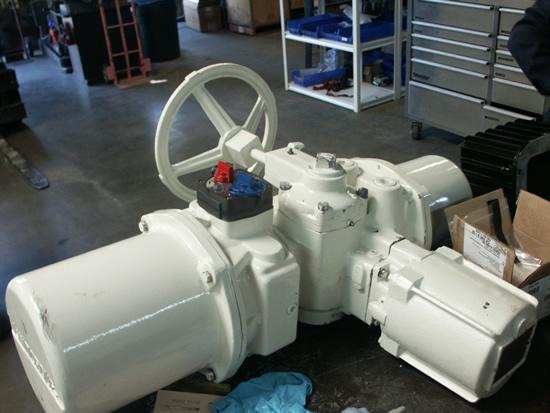
Integrity Management Support
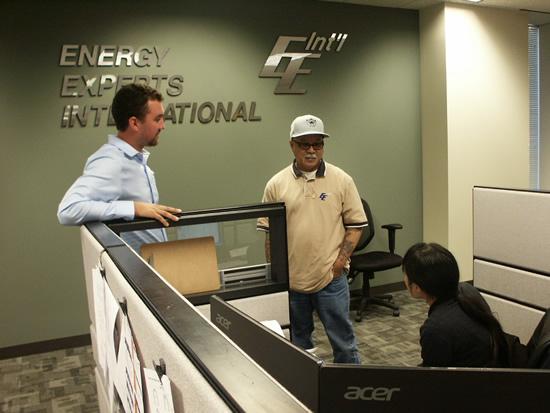
Since the passage of the Pipeline Safety Act and the subsequent incorporation of the Transmission and Distribution Integrity Management (TIMP, DIMP respectively) into the 49 CFR, Part 192, the natural gas industry has never been the same. These regulations were triggered by catastrophic events in both the natural gas and oil gas pipelines in the late 90’s. Subsequently, with the San Bruno and the Aliso Canyon incidents, regulatory oversight has grown more demanding and the ability to manage the Integrity Management Programs has become more complex over time. EEI can provide the utility with managing parts of these critical programs, while allowing the utility to focus on the overall management of these programs. Data assessments and gathering can often times be accomplished more readily by non-utility personnel. EEI’s Subject Matter experts are experienced industry veterans that are self directed and have the knowledge to provide accurate assessments and evaluations of station or pipeline assets.
EEI works with clients to facilitate the mapping and pressure qualifications of existing gas facilities. This is achieved by examining existing records for the piping material and other related equipment specifications as well as code-required testing data related to those facilities.
EEI has assisted Clients with determining the Maximum Allowable Operating Pressure (MAOP) of existing pipelines and stations by evaluating the pressure containment capability of each piping component and piece of equipment. These capabilities are evaluated on the basis of tests, manufacturer’s specifications, and code requirements. EEI visits installed facilities and records retention locations as needed to determine equipment specifications and MAOPs.
Downstream Segment
(Distribution Engineering)
EEI has engineered large scale projects involving the replacement of deteriorated distribution pipeline systems, as well as taking on special projects such as a copper service replacement program. EEI also designs and engineers distribution SCADA facilities. EEI has executed projects that involve the joint installation of gas and electric facilities. One unique advantage of EEI is that EEI’s electric engineers work with EEI’s gas engineers to ensure a smooth coordination on joint facility projects.
Using the same principles and processes described for Gathering and Transmission Pipeline and Stations Facilities, EEI engineers and designers have developed designs for portions of facilities, or complete facilities, for all of the following:
- Distribution new and replacement mains and services
- Distribution metering, regulating stations
- Propane/air peak shaving facilities
- Compressed Natural Gas (CNG) peak shaving facilities
- Liquefied Natural Gas (LNG) peak shaving and temporary emergency service facilities
In addition to the regulations, codes, standards, and specifications described for Gathering and Transmission Pipeline and Station facilities, EEI uses all applicable state and local industry documents and codes when engineering and designing distribution facilities.
Examples of past projects in the downstream segment include:
- Performed engineering, design, drafting, material and equipment specification, construction specification, construction bidding, and permitting and construction support for the replacement of 30 miles of old steel and Aldyl-A plastic gas distribution main
- Performed engineering, design, drafting, and permitting support for SCADA installation at172 existing high- and low-pressure regulator stations to monitor upstream, intermediate, and downstream pressure, and often included installation of a flow meter
- Acted as owner’s engineer and project management lead for the location and replacement of approximately 45,000 Copper Services over an eight year period. Also provided field inspection and permit coordination with city and county entities
